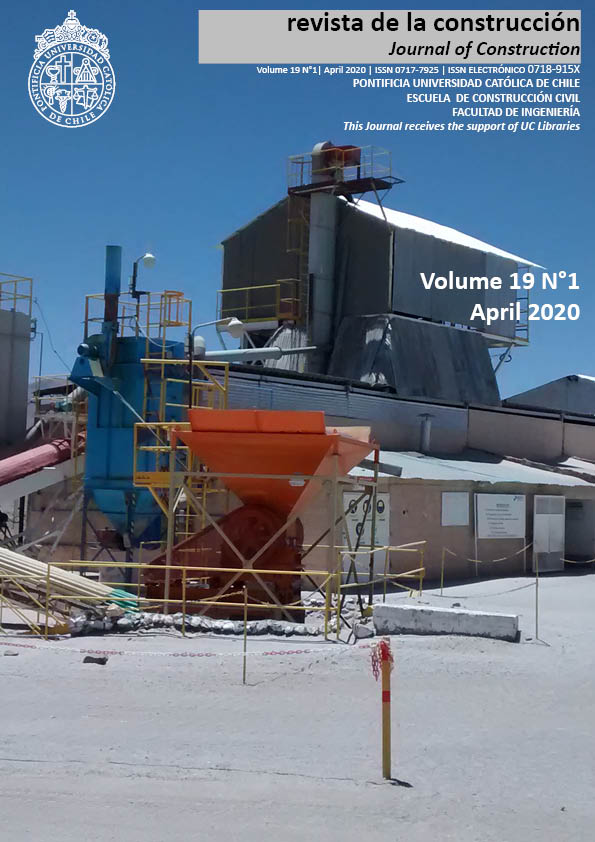An investigation on alkali-activated slag pastes containing quartz powder subjected to elevated temperatures
DOI:
https://doi.org/10.7764/RDLC.19.1.42-51Keywords:
Alkali-activated slag, Quartz powder, Elevated temperatures, residual compressive strengthAbstract
In this work, the opportunity of employing crystalline silica in the form of quartz powder (QP) to increase the fire resistance of alkali-activated slag (AAS) has been explored. The ground granulated blast-furnace slag (designated as slag) was partially replaced with QP at levels changed from 5% to 30% with a step of 5%, by weight. After curing for 28 days, the specimens were subjected to elevated temperatures varying from 400 oC to 1000 oC with a step of 200 oC for 2 h. The compressive strength before and after heating was measured. The new formed phases were evaluated by using X-ray diffraction (XRD), whilst the decomposition phases were evaluated by using thermogravimetric (TGA). The changes in the microstructures were monitored by using scanning electron microscopy (SEM). The results showed a positive effect of incorporation of QP, up to 30%, in AAS system before and after exposure to elevated temperatures.
Downloads
Downloads
Published
How to Cite
Issue
Section
License

This work is licensed under a Creative Commons Attribution-NonCommercial-NoDerivatives 4.0 International License.








